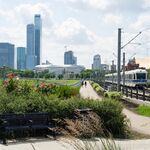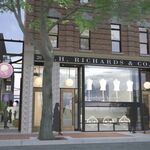SarcasticMarmot
Active Member
No argument there, some bike lanes are amenities and could potentially be a fair comparison. But the post I was responding to was referencing the City's spending on the Bike Lane Network project, which is explicitly about fixing the gaps in our bike transportation network. It's not a valid budget comparison with the omission of the water fountain in Warehouse Park.Core transportation is not the purpose of every bike lane in the city. The River Valley has numerous lanes and paths whose primary purpose is recreational by design and there was/is a monetary element in constructing and maintaining them. It wouldn't be a surprise to learn that the recreational lanes get more use from cyclists than the transportation bike lane arteries do.
That being said, the primary question about the omission of a water feature (fountain) remains. Why and who decided to omit it from the park?
Edit: Not personally concerned about the fountain being omitted. I think the park looks pretty awesome as designed even if it does have some compromises. Leg and City Hall are superior fountains anyway. Don't fry me!
Last edited:




